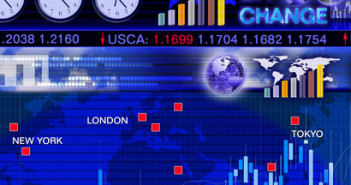Taking a breather from its parabolic rise since July, the USD is consolidating this morning, with the sharp declines in the Yen, Euro, and Sterling all managing to find a slight reprieve.  Price action across the G7 currency space is still choppy, with volatility seeping back into the market as a number of economic and political event risks loom on the horizon.  A gradual shift in currency markets is underway, with economic stability in America increasing the likelihood of a rate hike in the first half of 2015, thus flipping the script on traditional carry trades which use the USD as a funding currency.  Instead, an abundance of Euro and Yen supply has flooded the financial markets, as traders and investors take advantage of accommodative monetary policy regimes in those respective markets, looking to borrow cheaply in order to invest in more attractive yielding environments.  While from an economic perspective the debate on whether another round of QE from the Bank of Japan is likely will come after the effects of the sales tax on third quarter GDP numbers is assessed, the Yen has continued its downward spiral against the big dollar, with USDJPY breaching the 106 level as the yield on the 10-year US treasury inches back into the 2.5% area.
While the declines in the Yen and Euro have been economically correlated from a fundamental perspective, the Pound’s cliff dive is political in nature. The risk of a ‘Yes’ vote for Scottish independence continues to loom on the horizon, leaving investors nervous as to the future of the Union and what will transpire on September 18th.  While there may be short-term relief for the Pound should the ‘No’ side retake the majority by the time ballots are cast, anything less than a decisive victory for the Unionists will likely just shuffle the underlying separatists issues and risks continued efforts from the Scots for independence.  With the referendum risk hanging like a dark cloud over Sterling, GBPUSD is having a tough time making any headway.  Industrial production and manufacturing output over the month of July for the UK economy came in better than forecast this morning, also up from the y/o/y numbers registered in June, yet the pair has been unable to build constructively on the economic numbers.  In addition, Governor Carney at the Bank of England said in a speech that his baseline forecasts were to increase the lending rate in the spring of next year if the recovery continues on the same path.  Though, this is in-line with when market participants had been pricing the first rate hike from the BoE, confirmation from the chief of the BoE did little to influence any upward momentum for the Pound, continuing to struggle with the 1.61 handle.
As we head into the North American open, S&P futures are pivoting around the unchanged figure, with little in the way of economic data to move the needle until the JOLTS numbers at 10:00EST.  The Loonie is struggling to stem its bleeding from yesterday, though broad-based USD demand is causing hot money to push USDCAD for a test of the 1.10 handle.  Not helping matter this morning was a small miss for housing starts in Canada during the month of August, and though not usually a big driver of price action, isn’t helping the Loonie elicit a bid tone to detract from the sharp drop seen yesterday.  The JOLTS number due out in the next hour will likely influence price action in an otherwise quiet data day, though another strong print around expectations of 4.7M in job openings will likely continue to fuel dollar buying.
Further reading:
Carney signals rate hike only in the spring – GBP/USD loses gains
EUR/USD trades well below long-term uptrend support – next levels in sight



